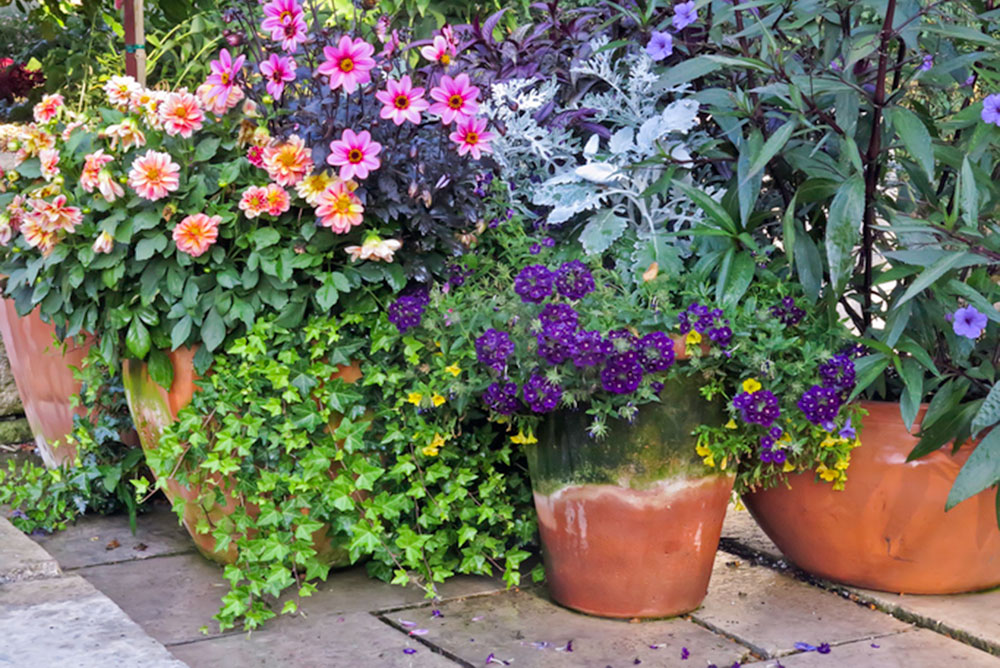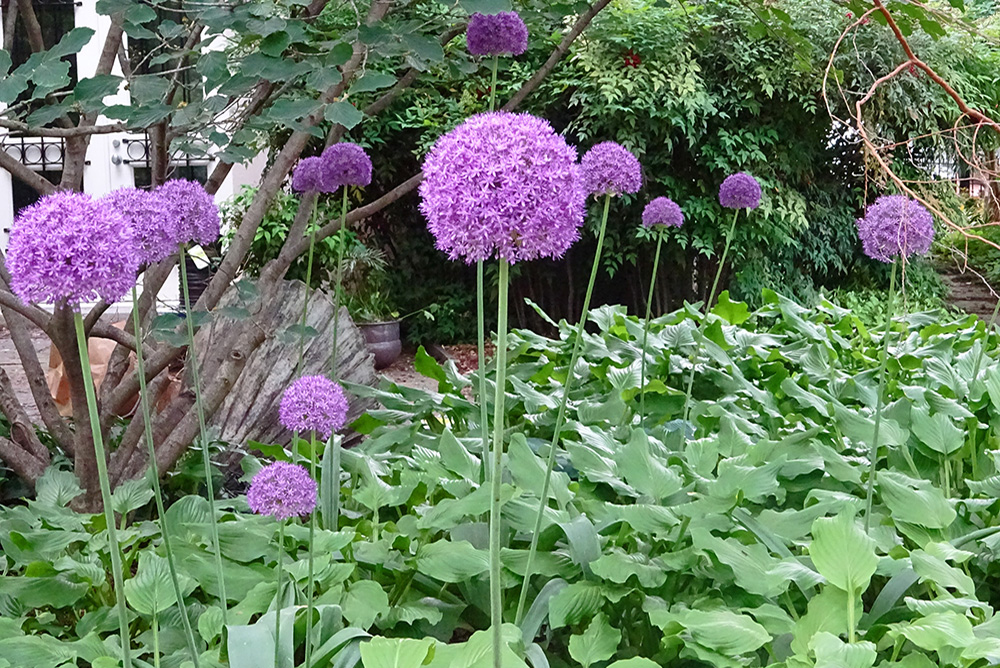
While the garden is dying, or just sleeping, you can liven things up with an array of pots filled with color. / iStock photo.
By Stephanie Cavanaugh
WELCOME TO THE season of neither here nor there. It’s still hot enough to fry an egg on the sidewalk, but the leaves are hinting at something other than green, the coleus is bolting, and the peonies are showing that damn grayish furz—at least they are for me.
It’s a shade too early for pumpkins and gourds (and planting fall bulbs), and the garden is beginning to look a little . . . depressing.
Unless you’re a devotee of wabi sabi, the Japanese aesthetic that celebrates the slow (or swift) decay of all things and calls it beauty—let’s save that for Halloween—it’s time for a little tidying.
- Clean it up. Pull the annuals that have had it for the year and clip away dead stems and branches. Wash your pots and planters—doubtless they’ve acquired a patina of crud over the summer months. A clean pot is a . . . I dunno, come up with your own aphorism.
- Pull any seedy-looking items that have cozied up to the geraniums and what-nots and dead-head shriveled flowers: You’ll probably get a new flush of blooms.
- Tidy up your walkways. They’ve probably sprung weedy bits and straggly edges. Give them a good wash-down while you’re at it. If you have a deck, give that a scrub too.
- Paint your railings, your woodwork, your front door—pick a smashing color for that last. It’s going to get too cold soon; paint does not adhere well below 50 degrees no matter what your painters say.
- Deck or porch, give the furniture a fall look. Lose the tropical prints and add pillows and such in autumnal shades. Toss a throw over a settee arm, something to snuggle under on a chilly evening (after dousing yourself with mosquito spray—they haven’t departed for bug heaven yet).
Now that you have gaps in the garden and clean pots on the porch (and deck), it’s time to fill those spaces with fresh color.
- Here’s where plants in pots come in handy: Plant them up with fall bloomers and plop them in the garden beds where you’ll want to put your tulips and so forth in another month or two—then you’ll just move them out of the way. I don’t love mums—they tend to frizzle fast in the DC climate—but if you don’t mind yanking and replacing, have at it. They’re certainly cheerful. Geraniums love this slightly cooler weather. They’ll go belly-up in a freeze, but in DC we don’t usually see one until mid-November, or later. If yours have become leggy, clip them back, dip the clipped stems in rooting powder, and just stick them in blank spots, watering well. They’re among the easiest plants to propagate.
- Add perennials that are attractive year-round. Camellias do brilliantly in this climate. The plants stay green and, if you choose an early-flowering variety, you’ll have fat, rose-like blossoms as soon as February. Hellebores are another spring flower that takes off when added to the garden in early fall. Fall-blooming anemones are such a cheerful sight; you probably won’t get much (if anything) out of them this year, but they’ll spread and put on a fine show in autumns to come.
- Clump your plants, and set your pots in groups of three for maximum impact—I don’t know why, it just works.
- Ornamental grasses. Talk about a quick filler. Some have plumes, some have frills, some just display a fountain of green. The fronds will turn brown in another month or so, but you can spray-paint them for a semi-tacky thrill. Put a spotlight at the base for a real night wow. Before you scoff, I got this from landscape architect Eric Groft of Oehme and van Sweden, and you can’t get much hoity-toitier than that. (This won’t harm the plants because in early spring grasses are cut to the ground, making way for new growth).
- Pansies, violas, ornamental cabbages and kale are fearless in cold snaps. They might plotz in a hard frost, but give a bit of sun and back they come. When it’s time to plant bulbs, tuck the bulbs under and around the pansies and such—their flowers will poke right up through. There. Now you’re about ready to bloom your way right through spring.

When it’s time to plant bulbs, you can tuck spring bloomers such as these giant alliums in among fall plantings or under ground cover. / Photo by Stephanie Cavanaugh.
